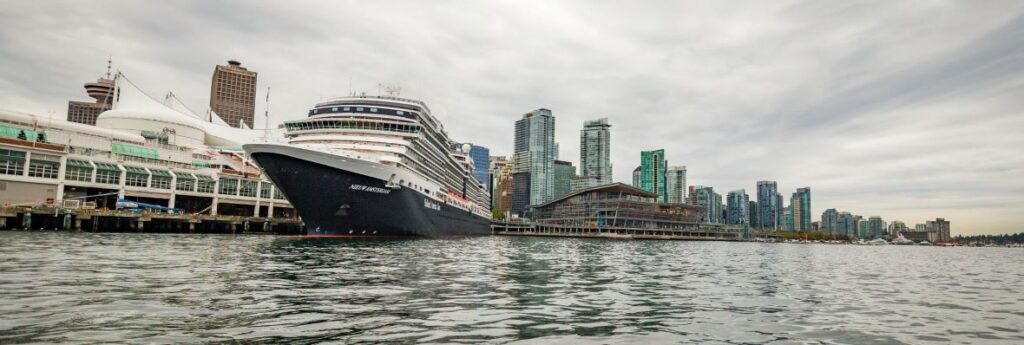Strict COVID-19 measures will be enforced when cruise ships return to Canada’s ports next month after a nearly two-year hiatus, including the requirement for passengers to be fully tested and vaccinated before returning to Canada.
Cruise ship operators will be required to inspect proof of vaccination and monitor and report test results, federal Transport Minister Omar Alghabra says, adding that no passenger will be allowed off a cruise ship unless they meet the testing and vaccine requirements.
Ottawa lifted its pandemic-induced prohibition on cruise ships in Canadian waters on Nov. 1, on condition that operators fully comply with public health requirements.
“The industry will have to follow a robust protocol,” Alghabra told reporters in Halifax Monday.
Under a framework developed with federal, local, and provincial public health agencies, the United States government and the cruise industry, all cruise ship employees and passengers must be fully vaccinated against COVID-19 in order to be allowed into Canada.
Passengers will need to take a COVID-19 molecular test within 72 hours before they board or take an antigen test within one day of boarding. They will also need a negative molecular test result within 72 hours before their return to Canada or an antigen test result within one day of their arrival, he said.
The cruise ship industry is worth about $4 billion annually to the Canadian economy and is directly and indirectly responsible for about 30,000 jobs in the domestic tourism sector, the federal government says.
The Cruise Lines International Association (CLIA) in Canada welcomed the announcement, noting that the first cruise ship since 2019 is scheduled to call in Victoria, BC, on April 6 before transiting to Vancouver.
“Cruise lines are preparing for a full schedule of sailings this year from April to November, with itineraries that will include ports and destinations on both Canadian coasts,” CLIA says.
The association added that “many months of work” and collaboration with multiple tourism and health agencies were required to enable the April restart and that CLIA would continue to engage with Transport Canada, the Public Health Agency of Canada and regional agencies to review protocols as the public health situation evolves.
According to CLIA, cruising supports approximately 30,000 Canadian jobs and generates an estimated $4.3 billion in total economic benefits in the country, including $1.9 billion in direct spend, and $1.44 billion in wages and salaries each year.
Allan Gray, president and CEO of the Port of Halifax, says the announcement gives a clear signal to ports and to tourism operators that ships are returning in a safe manner.
He says that while the revival of Canada’s cruise ship industry is certainly welcome, the biggest economic benefit from the sector goes toward tourism operators in the cities in which passengers debark.
“Cruises in most cases (are) never a large revenue earner for a port. It’s about the economic benefit that goes into the community and it’s about the support industries,” he says.
Gray expects the 2022 season, which runs from April to November, will help re-establish an industry that is expected to rebound vigorously in the years to come. Halifax is scheduled to see 152 cruise ships this season.
“The uncertain part is the actual numbers (of passengers) on board,” Gray says. “It’s been varying up and down so it’s difficult for us at this point to get firm numbers.”
Holland America Line (HAL) was quick to announce that the publication of procedures by Canada would allow it to resume a full season of Alaska and Canada/New England sailings in 2022 as scheduled that include Canadian homeports.
“This is a positive step for everyone who loves to travel to these regions and for all of the businesses in Canada that we support through tourism,” said Gus Antorcha, president of Holland America Line. “Many of the protocols Canada is applying were successfully implemented in the United States after the restart of cruising, and they are working well. We are well-positioned to follow Canada’s direction and continue delivering memorable cruise vacations that include Canadian ports.”
Other cruise lines, however, as reported by TIT cruise columnist Wallace Immen, have expressed concerns over Canada’s requirement for 100% vaccination rates for passengers (12 and older) and crew, noting that cruise lines are allowed to operate at 95% in the US. Carnival Cruise Line, for example, previously stated that proposed testing procedures could mean US ships would skip Canadian ports this year.

